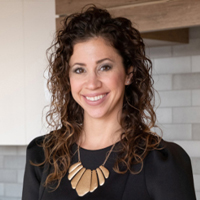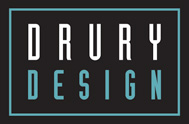Modern Porcelain vs. Traditional Porcelain
What You Should Know About Porcelain
by Alicia Saso
Porcelain? In the kitchen? Before you wrinkle your nose while thinking about the institutional-white and sometimes beige toilets of yesteryear, hear me out. Today’s porcelain countertops are a far cry from their utilitarian ancestors. Porcelain has been reimagined. It’s now a surprisingly practical alternative to options like quartz and quartzite.
First, let’s understand the difference between traditional porcelain toilets and modern porcelain countertops. Yes, today’s porcelain countertops share a name with their bathroom brethren, but things have changed. Today’s high-tech porcelain is engineered for strength and beauty, crafted from an innovative blend of minerals fired at intense temperatures. The result: countertops that are sleek, beautiful, stain-resistant and exceptionally durable.
This new kind of porcelain gained traction over the years in the form of large format tiles available in sizes like 12″ x 24″ and even 24″ x 48″. These larger sizes minimize grout lines and offer more surface area for larger design patterns. You’ll see today’s designers using porcelain for floors, showers, kitchen backsplashes and more. We’re talking bold patterns, book-matched statement pieces, marbled looks, subtle designs, monochromatic looks… you can do it all with today’s porcelain.
Porcelain is available in finishes like polished, matte/honed and even textured. Slab-sized porcelain is typically thinner than natural stone – a 1/2″ thick slab can be used for a more modern look and the edges can be mitered for a thicker appearance.
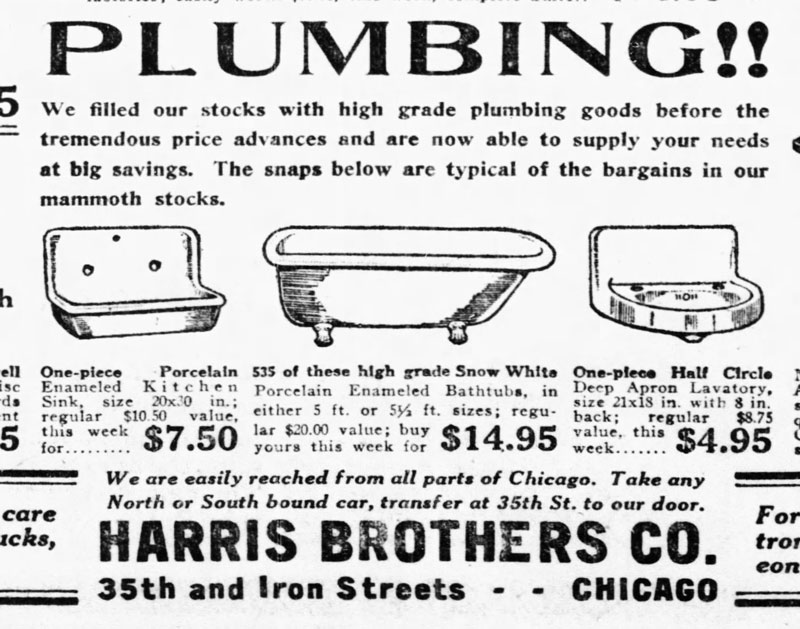
Indoor bathrooms were a luxury when this ad ran in the Chicago Tribune in 1917. A solid porcelain tub was the Cadillac of the emerging bath supplies industry.
Traditional Bathroom Porcelain vs. Today’s Versatile Porcelain – Know the Difference
When people think of the porcelain of yesteryear, particularly in the sanitary context of toilets and sinks, they are typically thinking about a specific type of ceramic material. That porcelain is known for its glossy white top coat glaze. The glaze is integrally bonded with the ceramic underneath to make a thin but crucial layer of the overall material.
Despite its delicate appearance, traditional porcelain is quite strong and durable due to its high-temperature firing process. You’ll see the word “vitrified” used to describe porcelain’s composition and glass-like surface properties. Porcelain has always been easy to clean. With such a smooth surface, bacteria can’t find grooves to hide and multiply in.
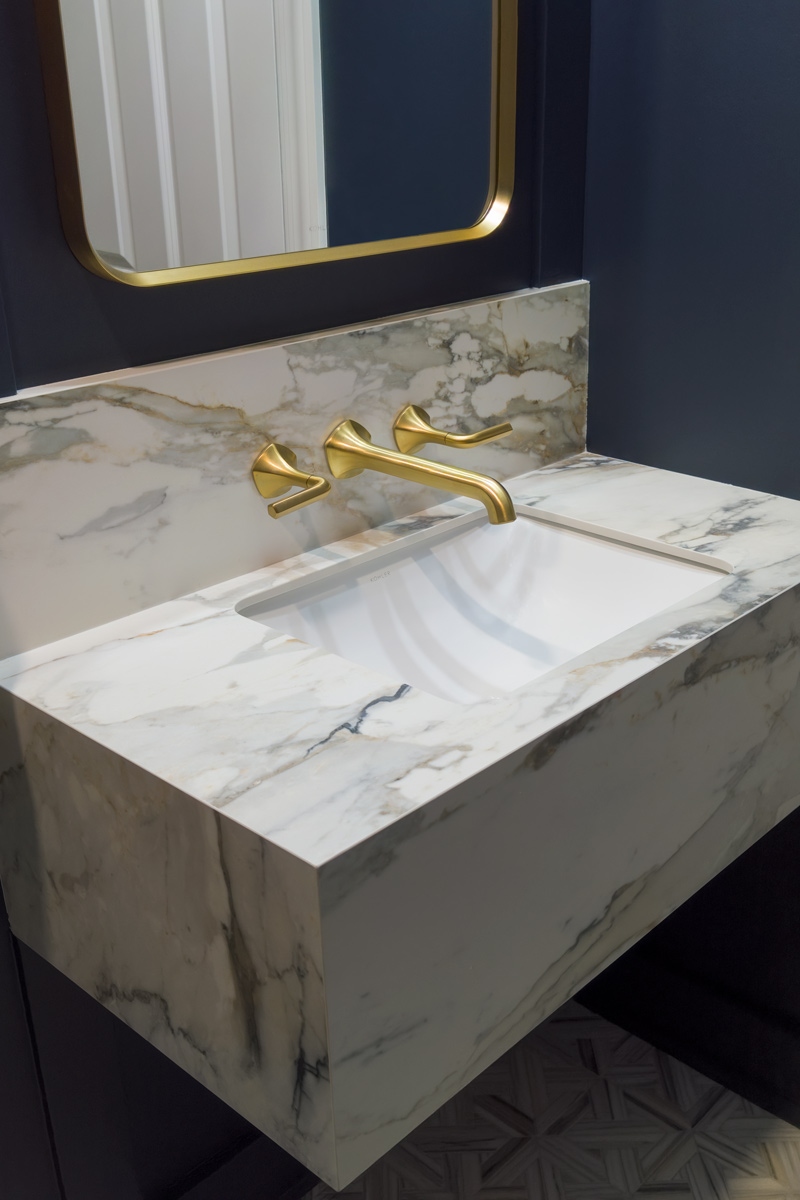
Drury Design recently had a client who utilized porcelain in a number of ways to create continuity between different rooms. Here it adds drama to a powder room near the kitchen. We made this bespoke vanity from porcelain slabs. Brand: Antolini. Color: Calacatta Macchia Vecchia.
Evolution
Today’s porcelain is still vitrified ceramic, but is engineered to be much stronger and more versatile. Advanced manufacturing technologies have also allowed for a greater variety of designs and finishes, far beyond the classic glossy white of traditional porcelain.
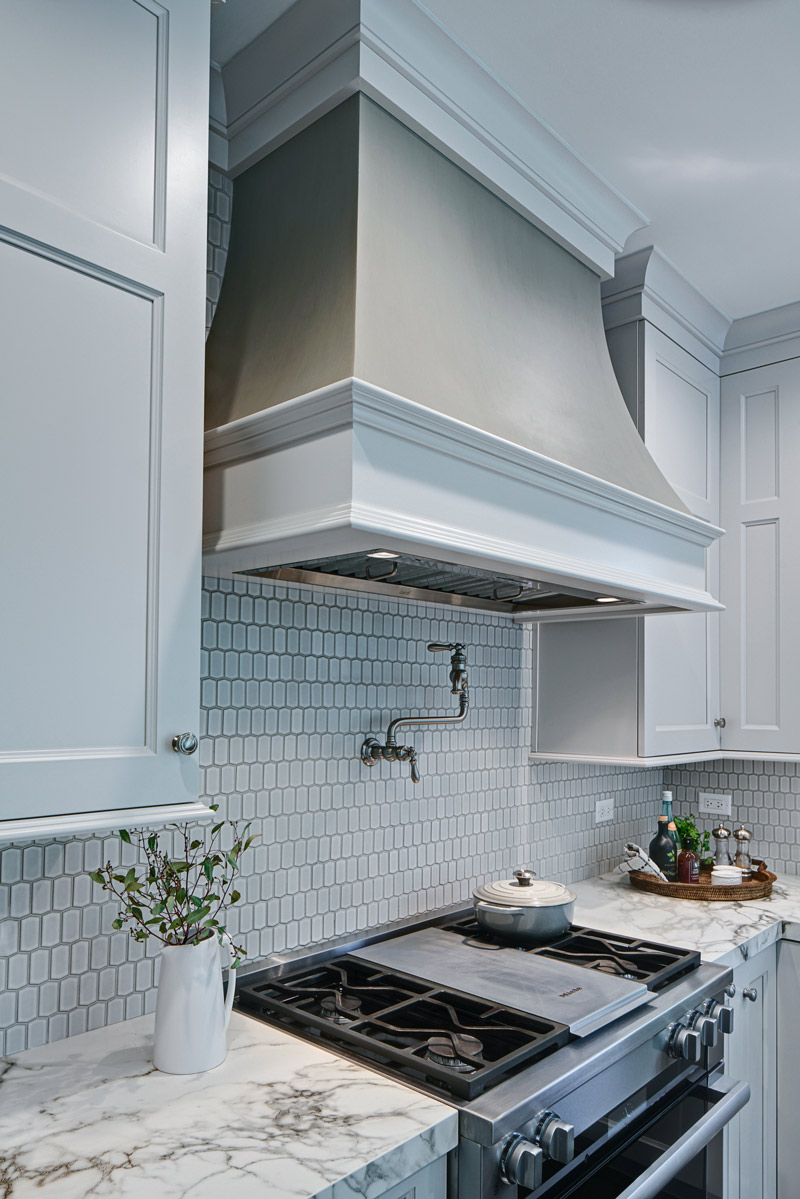
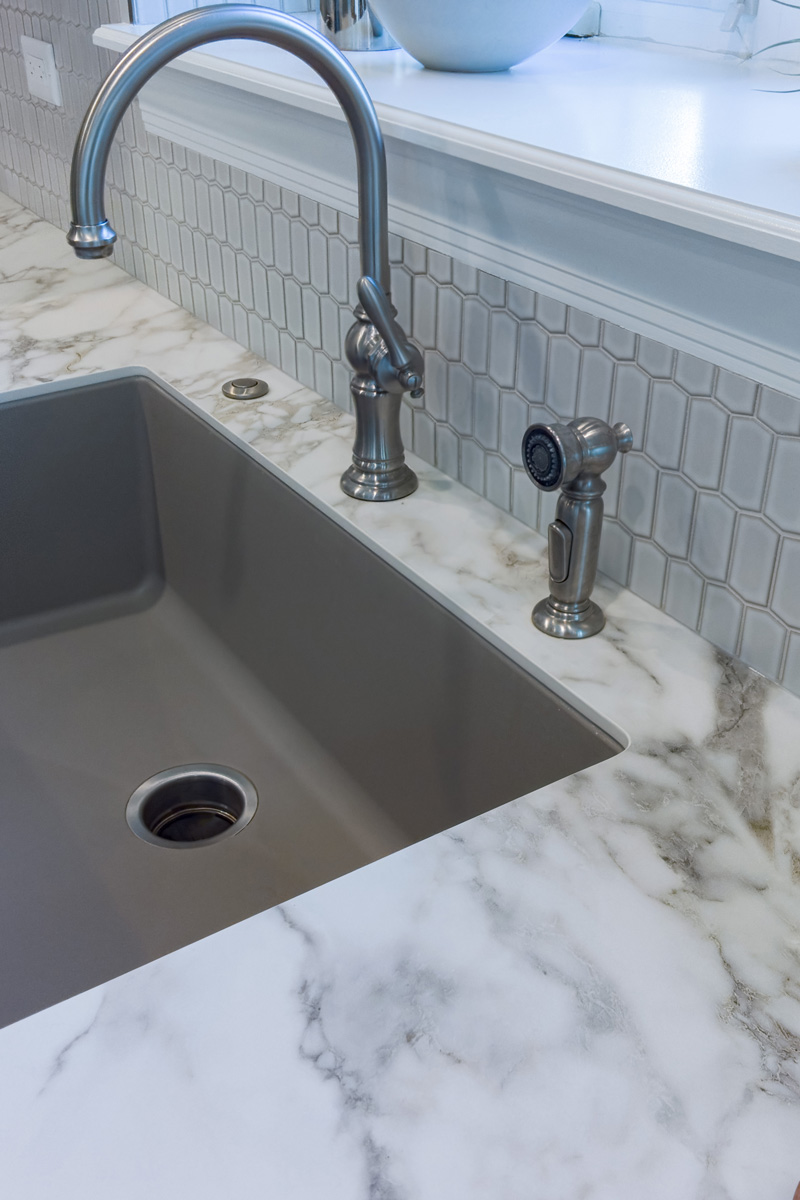
Here’s the same client’s porcelain countertops for their kitchen’s perimeter cabinetry. Brand: Antolini. Color: Arabesco, satin finish.
The Pros and Cons of Porcelain Countertops
Here’s why today’s modern porcelain countertops deserve a place in your luxury kitchen:
Design Chameleon
From marble-like veins to concrete-inspired textures, today’s porcelain countertops offer a stunning array of aesthetic possibilities. You can choose a pattern that complements your existing décor or go with something that creates a bold statement. The technology has come a long way – I can attest that some patterns/colors look identical to marble. These tops are a great option if you love the look of stone but don’t want to deal with the typical maintenance.
Durability
Some modern porcelain countertop products are diamond-hard, with a Mohs hardness rating of 7-8, outperforming even the toughest granites. That means scratches and chips are virtually non-existent. I would never recommend chopping vegetables directly on any countertop but yes, some porcelain countertop owners say they do this and love it.
Stain-Resistant Superhero:
Non-porous and impervious to liquids, porcelain won’t absorb spills or stains. We’re talking coffee, wine, even beetroot juice – they’ll bead up and wipe away effortlessly. No sealing required, ever.
Hygienic Haven:
The non-porous nature of modern porcelain countertops makes them ideal for kitchens, eliminating bacteria concerns (as long as you still clean it). Like old-school porcelain, modern porcelain countertops have a smooth finish and are super-easy to clean.
Heatwave Hero:
Many modern porcelain countertop owners will tell you that, rest assured, hot pots and pans won’t leave a mark. Porcelain can handle high temperatures without scorching or warping.
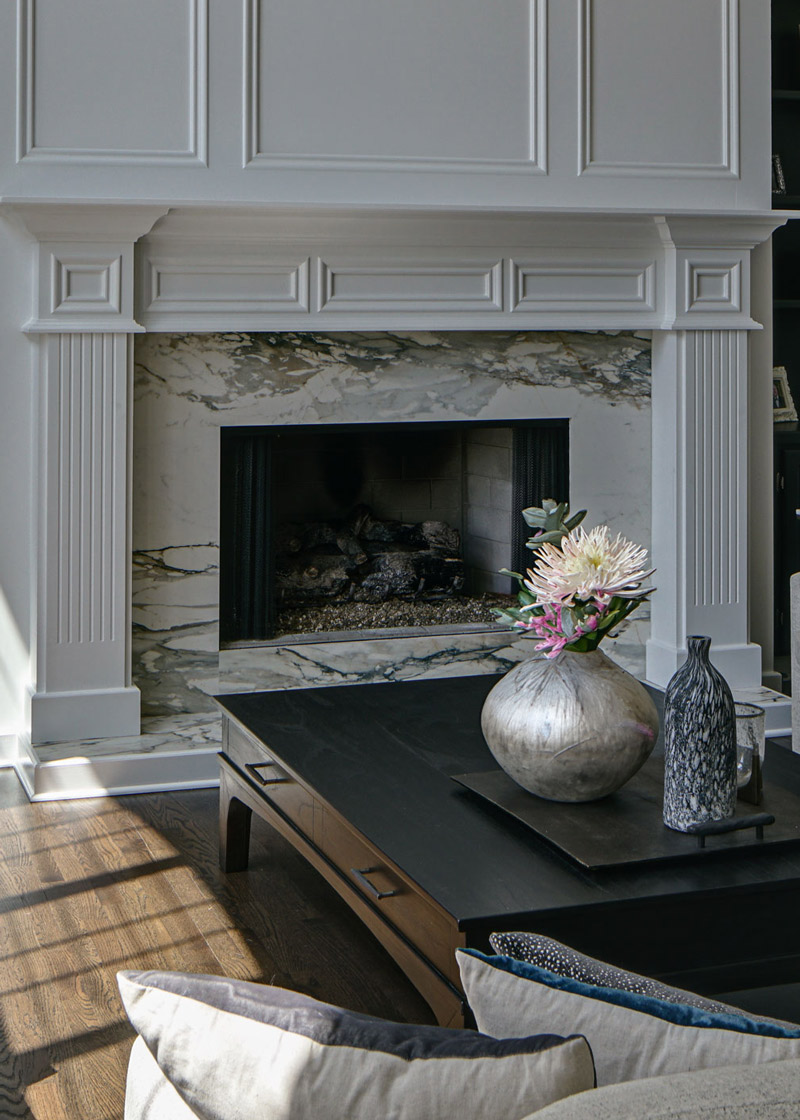
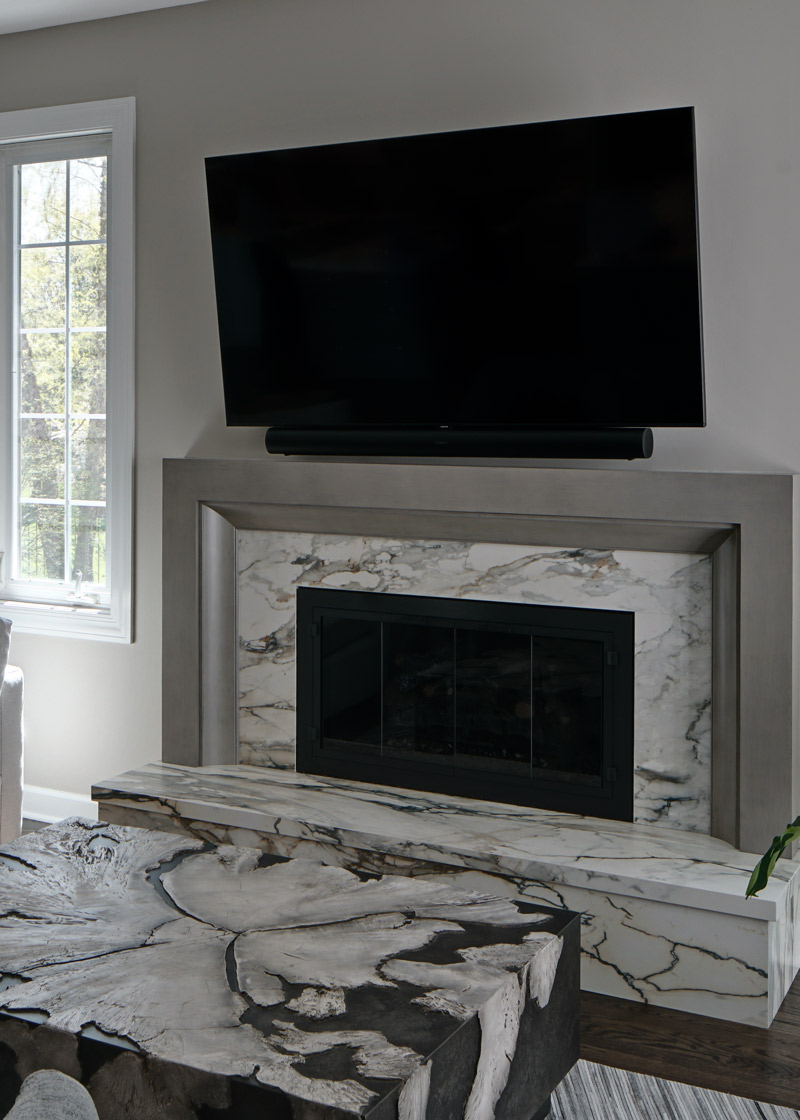
Same client. Porcelain is also great for fireplaces. Brand: Antolini. Color: Calacatta Macchia Vecchia, satin finish.
What Else You Should Know
Let’s be honest, no material is perfect. Here’s what you should know when considering porcelain for your project:
Heavy
Installation requires professional expertise due to the material’s weight. Not a problem if you work with us, of course.
Different Kind of Scratching and Chipping
Remember when I said that most scratches and chips are virtually non-existent? Many owners of polished porcelain tops indeed say they’ve never seen a scratch or chip, but there are some who say they can eventually see hairline scratches that weren’t visible at first glance. Also, despite being super strong and hard to break, if you drop something really heavy and sharp on a porcelain countertop, it can chip. This is expected with any other material, of course. In the world of countertop chip repairs, however, know that chipped porcelain is a little trickier to repair. The rare chips that do happen can be quite visible, especially on a polished top.
The Price Tag
Porcelain can be more expensive than some other countertop options. However, its durability and low maintenance often make it a worthy long-term investment.
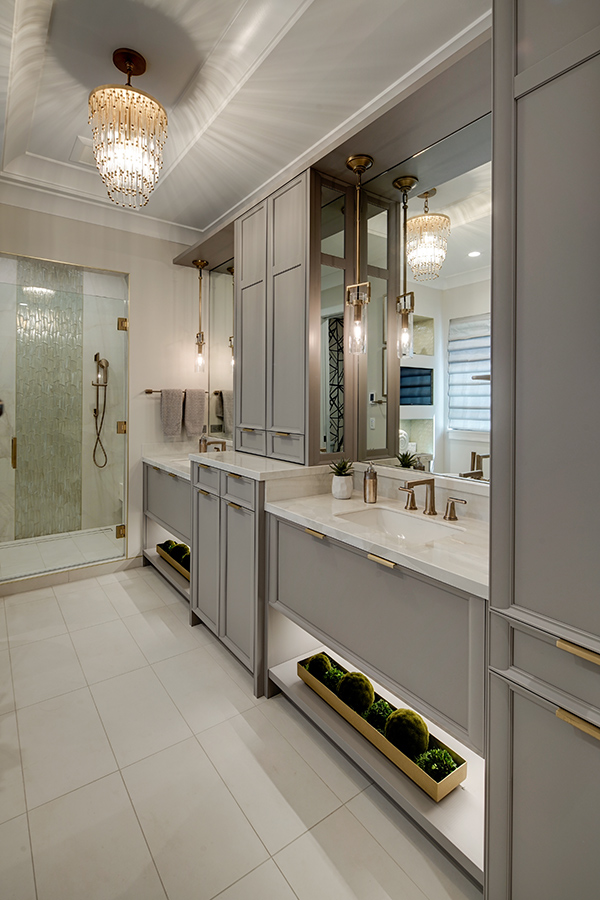
This client utilized porcelain tops to complement a design focused on wellness and relaxation. Brand: Transceramica. Color: Bright Onyx, polished.
Is Modern Porcelain Right for You?
Ultimately, the decision to choose porcelain comes down to your priorities and preferences.
Porcelain offers a blend of elegance, durability, and low maintenance that can elevate any space. As a relatively new player in the countertop material scene, it’s vital for consumers and designers alike to shed any preconceived notions about porcelain. This isn’t the porcelain of yesteryear – today’s porcelain is a modern, robust option that deserves serious consideration for your next design project. In the evolving world of interior design, porcelain countertops stand out as a testament to how innovation can redefine the use of traditional materials.
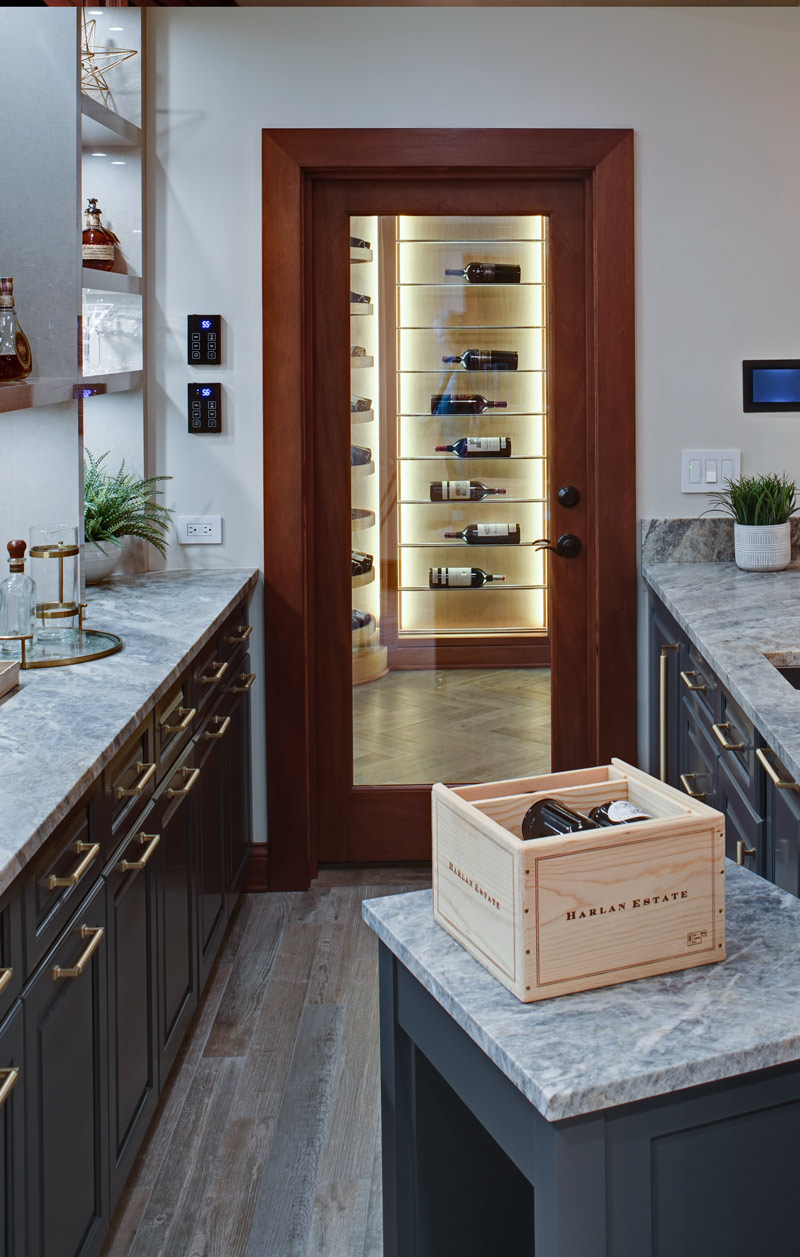
This Drury Design client chose a realistic wood-look porcelain floor tile in a light greige tone for their bar. Porcelain’s durability is a great match for a high traffic area with a rolling cart.
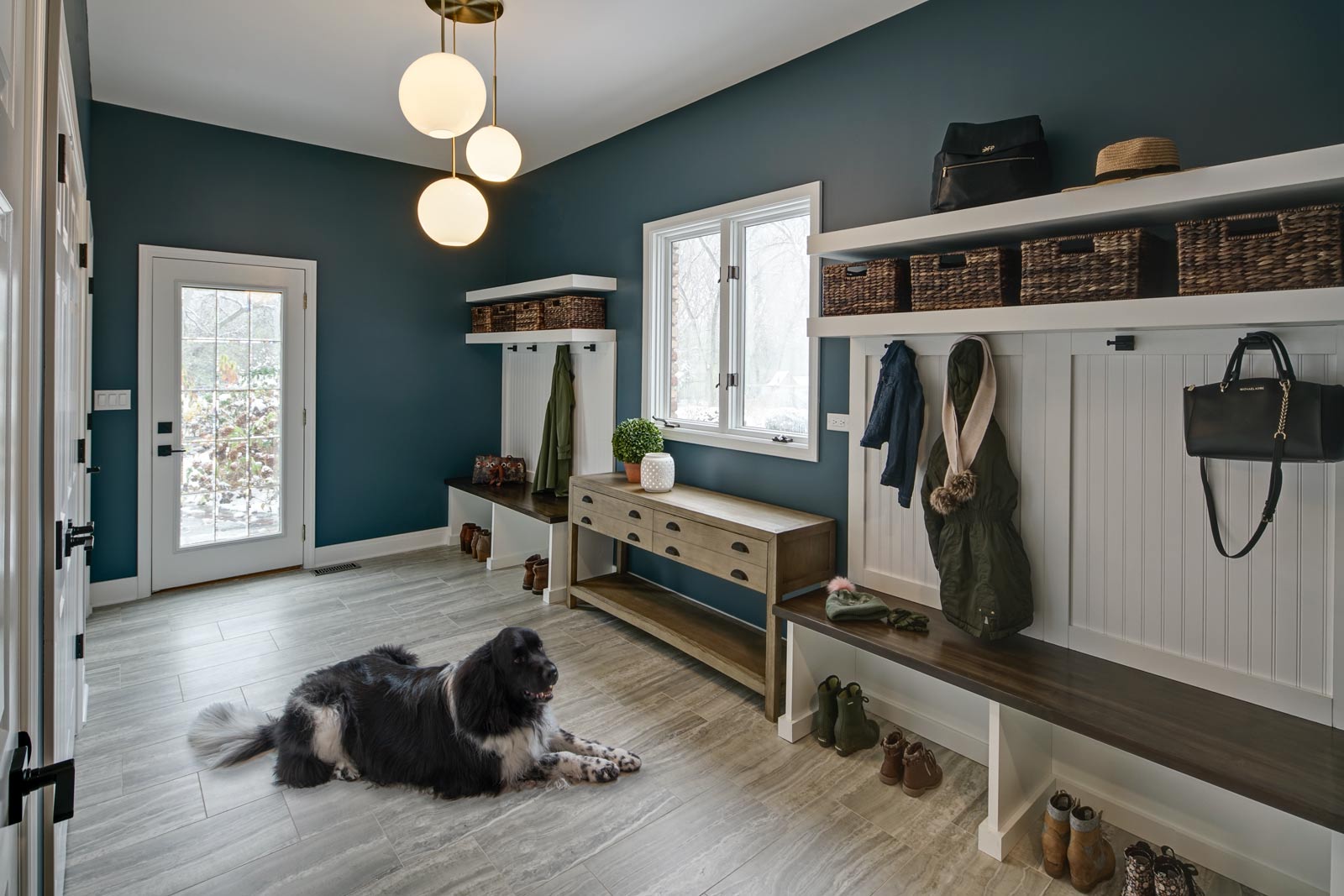
One of our clients recently opted for porcelain tile in their mudroom.
Continuing Evolution
It’s important to note that the countertop industry is in the middle of an evolutionary stage. In our recent blog post exploring the death and new birth of granite, Drury Design Owner/Creative Director Gladys Schanstra noted that the industry used to lump quartzite and granite into a combined category that was simply referred to as “granite.” And that was only a few decades ago.
Similarly, today the word “porcelain” is being used in a way that covers a lot of ground. We’re beginning to see some manufacturers and designers take stands on whether the name “porcelain” is applicable or appropriate when talking about certain engineered slabs that are commonly referred to as “porcelain.” The industry is wading through the distinctions to be made in the engineering processes (materials, firing temperature, liquefication, compression, surface printing, worker safety), the final products (color/pattern/veining on the surface vs. consistent through the body of the slab) and performance (overall durability, ability to be manufactured/installed at various thicknesses).
For you, the customer, this means you get to sift through all the techy explanations, trademarked terms and arguments presented by manufacturers and brand marketers who are doing their best to educate the market while distinguishing their own brands. Or, you can rely on us. Even within our company’s collective expertise and experiences you’ll find some differing and quite strong opinions on the pros and cons of porcelain countertops as well as other countertop materials. My colleagues and I are happy to share all of it with you. As you can see in the wide variety of countertop materials used in our projects, a big part of our job is informing you of what you should know so you can make the right choices for your family.
Senior Designer Alicia Saso, CKBD
has been helping Drury Design clients live life artfully for 15 years.
